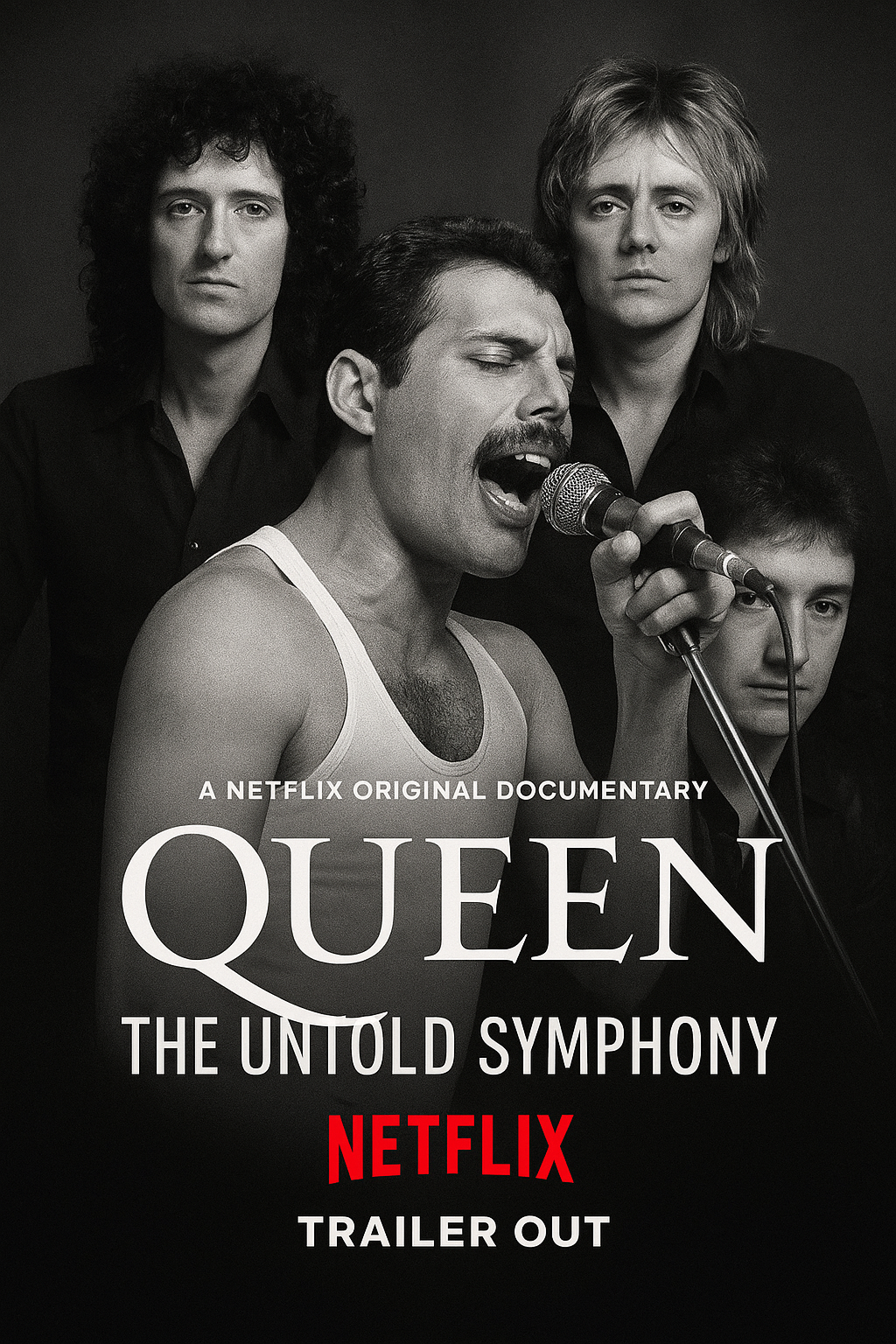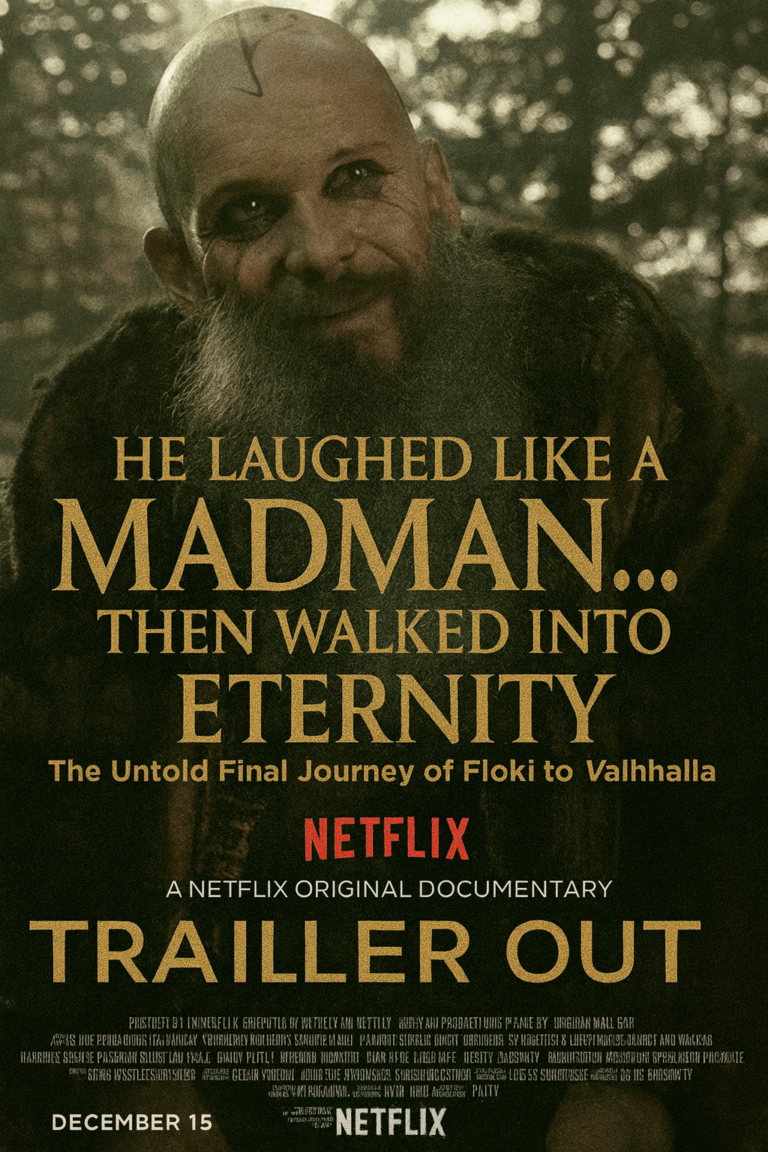
The Netflix documentary series on Queen opens with a cinematic flair that instantly captures the band’s legendary aura. From the very first frame, the familiar echo of Freddie Mercury’s voice fills the screen — a sound that shaped generations and continues to define the essence of rock. The series doesn’t just trace the band’s musical journey; it delves into the alchemy between four men who defied the rules of what a rock band should be. Each episode weaves through rare footage, never-before-seen interviews, and intimate moments that redefine how we understand Queen’s creative fire.
As the narrative unfolds, we are taken back to the smoky London clubs of the early 1970s, where a young Freddie, Brian May, Roger Taylor, and John Deacon first ignited their shared dream. The cinematography gives a raw yet poetic glimpse into the struggle and excitement of those formative days. Their sound was an experiment in controlled chaos — a fusion of opera, hard rock, and theatricality that few understood at the time. Yet, the documentary shows how their belief in their artistry never wavered, even when critics dismissed them as “too extravagant.”
By the third episode, the heart of the series beats strongest through the making of A Night at the Opera. This was the album that would make history — and the series takes its time dissecting every chord, harmony, and layer of “Bohemian Rhapsody.” The filmmakers highlight how Queen was more than just a band; they were a laboratory of sound and vision. Through behind-the-scenes tapes and interviews with the band’s collaborators, viewers gain a deeper appreciation for how much experimentation and emotional investment went into crafting music that transcended its era.
The emotional gravity of Freddie Mercury’s story takes center stage as the series progresses. His charisma, flamboyance, and vulnerability intertwine to create a portrait of genius haunted by both triumph and tragedy. The documentary captures not only his public persona but also his private struggles — his need for love, his complex identity, and his battle with loneliness despite being adored worldwide. It is in these quieter, reflective moments that the documentary shines brightest, giving audiences a Freddie who feels human, fragile, and fiercely real.
Brian May’s introspective commentary anchors much of the narrative. His reflections on their creative clashes with Freddie — and the unspoken bond they shared — reveal the emotional layers beneath the band’s grand performances. The documentary portrays Queen as a democracy of talent, where every member contributed to the band’s magic. May’s soaring guitar solos, Taylor’s thunderous drumming, and Deacon’s understated bass lines were all integral threads in the fabric of their music. Each voice mattered, and Netflix’s storytelling ensures none are overshadowed.
When the series explores Queen’s world tours, the energy becomes electric. The Live Aid sequence is recreated with such authenticity that it feels as if the viewer is standing in the crowd at Wembley Stadium in 1985. Archival footage merges seamlessly with newly restored visuals, turning the performance into a transcendent experience. Freddie’s “Ay-oh!” call-and-response echoes across the years — a moment that still sends chills down the spine. The documentary doesn’t merely show a concert; it resurrects a cultural awakening.
But what truly sets this series apart is its refusal to sanitize the band’s internal tensions. The arguments, creative burnout, and near-breakups are all presented candidly. In doing so, Netflix honors the honesty of Queen’s story — that brilliance often coexists with discord. Their ability to overcome egos and rediscover unity becomes a powerful metaphor for artistic resilience. Viewers come away understanding that greatness isn’t born from perfection, but from persistence through imperfection.
The production quality is cinematic, blending vintage film grain with modern restoration techniques that make old footage feel timeless. Interviews with contemporary artists — from Lady Gaga to Adam Lambert — underscore Queen’s enduring legacy. They speak of how Queen’s boundary-pushing sound continues to inspire musicians across genres, decades after their first chord rang out. The series manages to bridge the gap between nostalgia and relevance, proving that Queen’s music is as alive today as it was half a century ago.
Freddie’s final years are treated with remarkable grace and sensitivity. The focus isn’t on his illness, but on his undying devotion to music. The sessions for Innuendo and Made in Heaven are framed as acts of courage — a man singing against the ticking of time. His voice, fragile yet defiant, becomes the emotional crescendo of the series. It’s a farewell not of sorrow, but of gratitude.
The documentary premiered globally on October 29, 2025, and has since captured the hearts of millions. Its release date feels symbolic — arriving at a time when music documentaries are evolving into art forms of their own. Fans and newcomers alike have praised Netflix for creating not just a biography, but a living testament to creativity, individuality, and love.
As the final episode fades out, the screen goes dark except for one line: “The show must go on.” Those words linger — not as a cliché, but as a truth that defines both Freddie Mercury and the spirit of Queen. The documentary doesn’t just end; it reverberates, reminding us that legends never really leave. They echo in our playlists, in our voices, and in every generation that dares to be different.
Ultimately, Netflix’s Queen: The Untold Symphony is more than a documentary — it’s a celebration of life, art, and defiance. It captures the duality of human existence: the struggle and the spectacle, the pain and the performance. Through it all, Queen’s music stands as a timeless reminder that even in the face of silence, the melody lives on.




